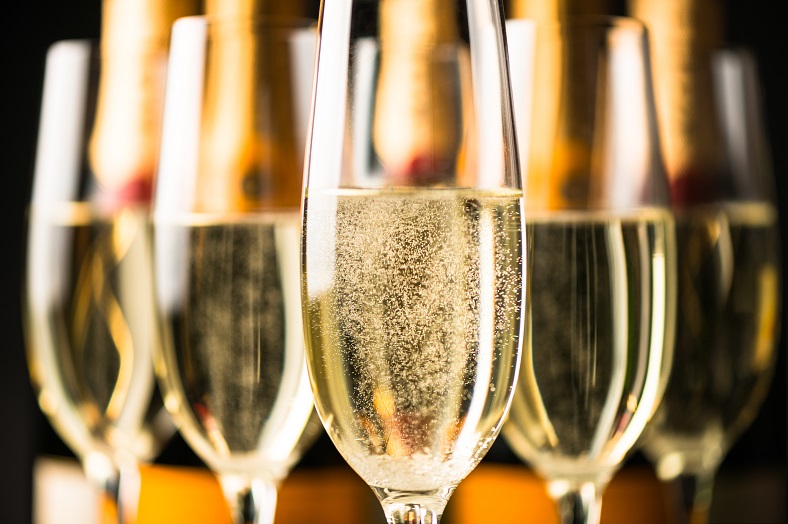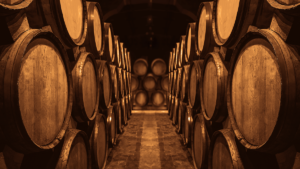
Champagne is a go-to aperitif wine, perfect for kicking off the festivities before settling down to a meal. However, it can also be served quite happily at the table to accompany whatever delights you’ve prepared in the kitchen. Let’s have a look at how to pair your favourite fizz.
1. When the guests arrive
Brut and undosed champagnes are great for an aperitif with their freshness and finesse. And when it comes to picking an amuse-bouche, the choice is vast! Cured ham, prawns, gougères (a kind of cheese profiterole)…the list goes on, and you can really go for what you fancy! Just be careful not to serve anything that’s too salty or spicy, as this will overpower the delicate wine. This kind of champagne can also be served with a starter. Again, you won’t want to serve anything too rich, so seafood dishes involving crustaceans, oysters, or scallops are all light enough to complement the bubbles. Some of our favourite undosed champagnes come from Maison Philipponnat and the biodynamic Larmandier-Bernier, and Francis Boulard, Drappier, and Deutz all craft fantastic brut cuvées.
- See all the brut champagnes and undosed champagnes for sale at iDealwine.
2. The dining room calls
With a more structured blanc de blancs, you want a dish with a little more character. For a traditionally French pairing, now is the time for foie gras, and this will go well with a Chardonnay champagne, marrying richness from the dish with acidity from the wine. Smoked salmon is also a good option, since a vinous blanc de blancs can cope more than fine with this flavourful seafood dish. Cuvées from Billecart-Salmon, Pierre Moncuit, and Agrapart will be sure to please.
- See the blanc de blancs champagnes
3. A warming stew against the winter cold
Alternatively, if you’re looking to serve something meatier, a poultry cassolette is a kind of meat and vegetable stew usually served in individual, little casserole dishes. A champagne based on the Pinot Noir grape will pair beautifully with the character of this dish. The blanc de noirs Sève brut nature by Olivier Horiot, the biodynamic brut Réserve from Leclerc-Briant, and the brut Réserve by Roger Pouillon & fils are all excellent inspiration.
- See the blanc de noirs champagnes
4. A toast to fine food
When we get to the heartier dishes, a full-bodied wine is best. But that doesn’t exclude champagne from your options! Roast lamb in herbs, guinea fowl, and many kinds of red meat can be served with a robust and complex champagne. Your best bet here is a mature vintage, since the years they have spent in casks will have conferred a certain strength. Jeanne Presle’s Roses, Cédric Bouchard’s blanc de noirs, and the vintage Quinte Essence Extra Brut blanc de noirs made by Franck Pascal are superb examples!
5. Time to retire
Desserts are generally sweet and medium-dry champagne territory. Note that any dessert involving chocolate is best served with another kind of wine, as it doesn’t tend to pair well with the vivacity of champagne. However, a dessert with red fruits will be lovely with a rosé champagne!
- See rosé champagnes
Here’s a reminder about champagne labels and what they mean. The classification of extra-brut, brut, extra-dry, dry (sec), or medium dry (demi-sec) refers to the amount of sugar present.
Extra-brut (brut nature, undosed): 0 to 6g/l
Brut: less than 15g/l
Extra-dry: 12 to 20g/l
Dry (sec): 17 to 35g/l
Medium-dry (demi-sec): 35 to 50g/l



